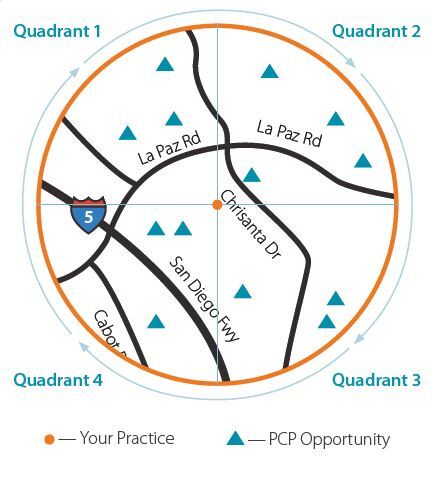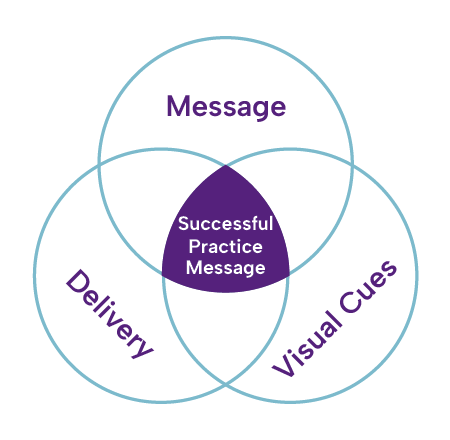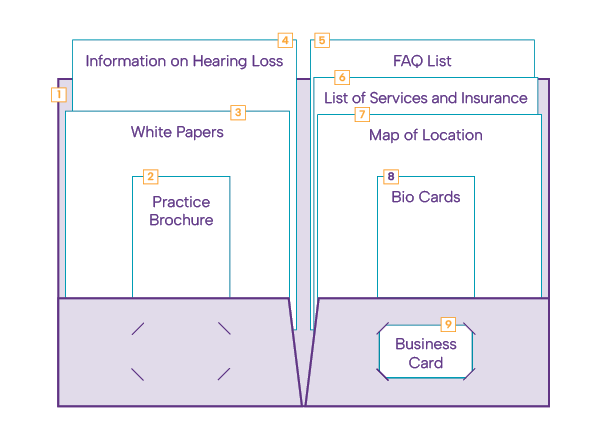
Why Physician Outreach?

Change in our industry is the new normal. One constant, though, is the relationships you cultivate in your region. When a local health care professional associates your practice with a friendly face, referrals aren’t far behind.
That’s why physician outreach is crucial to your comprehensive marketing strategy:
- 73% of patients talk to their primary care physician (PCP) first about hearing loss. But only 20% of PCPs routinely perform hearing screenings.
- Patient care is a PCP’s top priority. Specialists who report back on comorbidities will become go-to referrals.
- PCPs need to be up to speed on disruptive technologies — such as over-the-counter hearing aids — so they can counsel their patients on the pros and cons.
- Physician outreach is another way to brand yourself as a community health care expert.
- Physician outreach generates extra revenue. Suppose outreach netted you three extra hearing aid opportunities a month, and you maintained a conversion rate of 1.3 and an average selling price of $2,500. Within a year, you would generate an extra $123,229 in revenue.
Physician outreach is an investment in time and energy. Build relationships, trust the process, and don’t expect instant results. Stick with it and the referrals will start to roll in.
This tactic has a hidden benefit as well. You can build employee engagement and alignment by delegating this important activity to a captain.
Track Your Physician-Outreach Efforts

Be sure to capture data (example below). Tracking your methods and results helps you make informed decisions about your program. Include information such as:
- Practices
- Key contacts
- Contact information
- Visit dates and collateral
- Scheduled lunch-and-learns
- Lift in referrals from visited physicians
Identify and Map Physicians

Include current referral relationships
Keep your practice top of mind with established referral relationships. Has that practice manager across town seen anyone from your office lately? If not, they might forget about you. You can generate this list from your operating management system.
Identify new physicians to target
Three common options for gathering information are:
- Online research on area physicians
- A purchased resource list of physicians from TheLittleBlueBook.com
- Specialty physicians such as endocrinologists, oncologists, and neurologists (as secondary options)
One way our business-development team serves our members is by providing physician or competitor lists.

Create your physician map
Plot your full list of targeted physicians on a map with your practice at the center. Divide the map into quadrants and do each in turn, to avoid zigzagging across town.
For monthly outreach, do quadrant one the first month, quadrant two the second month, and so on. By the end of the year, you will have visited each office three times.
Develop Your Practice Message

Whoever handles physician outreach should know the practice message. This is a succinct statement of the benefits of working with your practice. Develop a two-minute (or less) pitch that summarizes what you have to offer, why their office should care, and how you can work together to help their patients.
Constructing your practice message
Your practice message needs to accomplish three things:
Answer WHY. State why you’re approaching this physician’s practice. For example: We know providing valuable health content is important for your patients’ overall well-being.
Explain HOW. Describe what you can provide that will help them. For example: We would like to bring you valuable content on a monthly basis, which would help you improve your patients’ overall well-being.
State WHAT. Assure them of what they can expect from you. For example: If you can rely on us to consistently bring this to you, you can trust us to deliver the best patient care to anyone you refer.
Key questions for building your practice message:
- What is your practice known for among your patients or community?
- What kind of relationship do you want to have with the listener(s)?
- How long have you been in the community?
- How/why are you different from your competitors?
- What is your common interest with the listener(s)?
- What matters the most to them? Time? Quality patient care? Superior service?

Delivering your practice message
Here’s what it might sound like:
Why: We know the health of your patients is important to you at Cherry Valley Primary Care.
How: If we could help you improve the overall health of your patients and, in turn, possibly raise your PQRS reimbursements, would you find value in that?
What: You can expect Awesome Audiology to provide helpful medical studies on the comorbidities of hearing health and numerous common health issues. Would it be possible to grab a few quick minutes with [physician’s or referral coordinator’s name]?
Remember:
- You’ll have to interact with a gatekeeper first
- The delivery of your message should be effortless and succinct
- Mention what the targeted practice does to show you have done your research
- Be intentional, well rehearsed, and conversational
Connecting With the Practice

Practice information packet
Bring an information packet on your first visit to any practice. This is one of their first impressions of your practice — make sure the information flows well and that your contact information is easy to find. The packet should contain the following:

- Folder with logo and contact information
- Practice brochure
- White papers on comorbidities
- Generic information on hearing loss
- FAQ list
- List of services and accepted insurance
- Map of location and distance from the physician’s practice
- Biography cards for providers
- Business cards
Key Contacts

Three key contacts should be introduced to your practice (other than the physician). Here are some strategies to approach them on your visits.
Referral Coordinator (RC) — This person is responsible for deciding to whom a patient is referred. In a practice with an RC, the physician probably doesn’t know to which specialists his patients are being sent. The RCs will benefit most from knowing the basic information you share with potential patients.
Nurse Practitioner (NP) — The NP’s primary focus is patient care, making them an ideal link between the patient and the physician. They discuss needed care with patients (and their families), so including them in the comorbidity approach is an excellent strategy.
Practice Manager — This person runs the daily ins and outs of the practice. They wear multiple hats and always seek ways to drive better patient outcomes. Make sure they know who you are and what services you provide.
Putting Your Best Foot Forward

Establish your new relationship by both calling and visiting a prospective practice.
Practice calls
Introductory calls are only for the first contact with a practice. Set aside about 30 minutes in a place where you won’t be disturbed. During the call:
- Give a brief introduction of yourself and the practice
- Find out who the key patient-care personnel are
- Ask when they are available for a brief in-person introduction
After the call, record all pertinent information in a tracker.
Practice visits
Be prepared! Bring a shared patient’s information, if applicable, and a practice information packet.
Keep your interaction short and polished. Greet the receptionist with a friendly introduction. If you spoke with this person on the phone, connect the dots to your last conversation. Finally, ask if the RC is available.
If the RC is not available:
- Ask for their business card
- Ask to leave a practice information packet for the physician or RC
If the RC is available:
- Introduce yourself and deliver the practice message
- Ask “How can we best assist your practice?”
- Mention areas in which you can provide helpful information, such as comorbidities, PQRS reimbursements, and OTC/DTC devices
- Ask questions tailored to their practice
- Define next steps
After the visit, record all pertinent information in a tracker.
Tracking Your Success

You have everything you need to be successful. But what does that success look like?
The Physician Outreach Calculator estimates the projected revenue of your physician-outreach efforts. The calculator uses figures from your practice to illustrate what’s possible.
To start, factor in your touchpoints — that is, every effort associated with bringing in a new referral:
- A phone call to the practice
- A practice visit with the RC
- Dropping off thank-you gifts
- Hosting lunch-and-learns
- Sharing educational materials on comorbidities
The calculator example uses the pharmaceutical average of six touchpoints to bring in one new patient referral. If your practice is more effective, you can update the calculator to reflect it.
In the calculator example below, this practice has determined that they will be able to complete 35 touchpoints in one month (blue row). Based on six touchpoints per referral, the practice can expect about six patient referrals from their physician-outreach efforts:
35 touch points ÷ 6 = about 6 projected referrals
In this example, let’s say only 50% of the patient referrals will have an aidable loss. In this case, only three patients would be classified as a referral with loss:
6 referrals × 0.5 = 3 referrals with loss
Applying the practice ER of 1.3, this practice could expect four hearing units will be purchased:
3 referrals with loss × 1.3 ER = 4 HA units
With an ASP of $2,500, this practice could expect just over $10,000 per month in additional revenue:
4 HA units × $2,500 ASP = $10,000/month
With consistent effort in physician outreach and maintaining all of the variables, this practice could expect to generate over $120,000 in revenue over 12 months:
12 × $10,000 = $120,000/year
Remember, it takes time to build and preserve your network, so stick with it! It can take six to nine months to generate one referral from a new physician relationship. The potential upside is worth the time and effort and will help you maximize your execution.
Our members enjoy the support of their Strategic Business Unit in every step of the physician-outreach process.
Get a sample of their know-how — get our physician-outreach guidebook today!